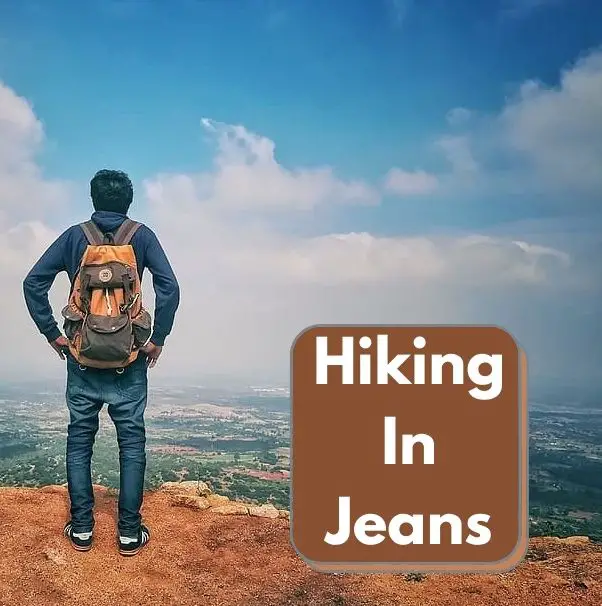Jeans are something nearly everyone has in their wardrobe as jeans are durable, comfortable, affordable, and stylish. But is hiking in jeans wise?
You should not go hiking in jeans. Jeans are made from cotton which holds moisture and dries slowly, which will make you hotter in warm weather and lower your body heat in cold temperature. Jeans are also heavier than hiking pants and can cause chafing when you sweat because they lack moisture wicking.
All this being said, jeans are fine for very short and simple nature walks or quick hikes, but don’t get caught on a long hike in jeans.
We’ll go further in depth on the pros and cons of hiking in jeans below.
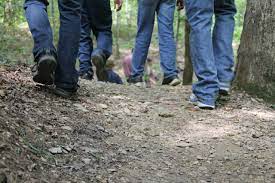
Why Wearing Jeans When Hiking Is A Bad Idea
Cotton Holds Water
Jeans are denim, denim is cotton, and cotton holds water – in fact, cotton can hold up to 27 times its weight in water!
As you hike, you’re going to sweat, and that moisture will get trapped in your jeans because cotton has high moisture retention.
That may not seem like a big deal, but that moisture affects your body temperatures: when it’s cool out, hiking in jeans that are moist from sweat will continually draw your body heat away which increases your risk of hypothermia.
Wet clothing reduces body heat 25 times faster than dry clothes, so this is critical.
If it’s warm weather and you’re hiking in jeans, that same sweat will make your jeans feel sticky and uncomfortable and can work to raise your body heat, causing you to sweat more and risk dehydration or overheating.
Jeans Are Not Moisture-Wicking
Most hiking gear places an emphasis on moisture wicking, which is the ability for clothing to move moisture away from your skin to the outer surface of the clothing, allowing sweat to evaporate.
We covered earlier how if this sweat stays on your skin, it can cause body temperature issues in both hot and cold weather, which is something you want to avoid as much as possible.
Jeans Take Forever To Dry
Because cotton holds moisture, jeans do not dry quickly.
If you encounter rain or have to cross water while you’re hiking, those jeans are going to be wet the whole time, weighing you down and making you miserable out on the trail.
Hiking In Denim Can Cause Chafing
Jeans are made from thicker and stiffer material than most hiking pants, the constant motion of hiking in jeans can chafe your skin, leading to discomfort and blisters.
Jeans Limit Your Range Of Motion
Although jeans with stretch materials are becoming more common, jeans still don’t have the same range of motion as proper hiking pants.
As you hike, you’ll be going up and down hills and maneuvering around obstacles, all of which requires a wide range of motion.
You don’t have the same range of motion or flexibility when hiking in jeans.
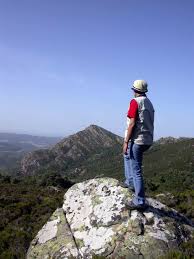
Benefits Of Wearing Jeans For Hiking
Jeans Are Durable
Jeans were originally invented by Levi Strauss as a solution for workers who needed pants that could hold up to the demands of hard labor and tough environments, so denim is naturally a very durable material.
Jeans provide rugged protection against things like branches, thorns, and underbrush which you’ll encounter often on the hiking trail.
Jeans Are Affordable
While hiking pants can run from $50-$200, most jeans are between $20-$50 and most folks already own a few pairs, making them much more accessible.
Most Jeans Are Comfortable
Many people wear jeans as casual pants for relaxing and find them quite comfortable, which is especially true if they fit properly.
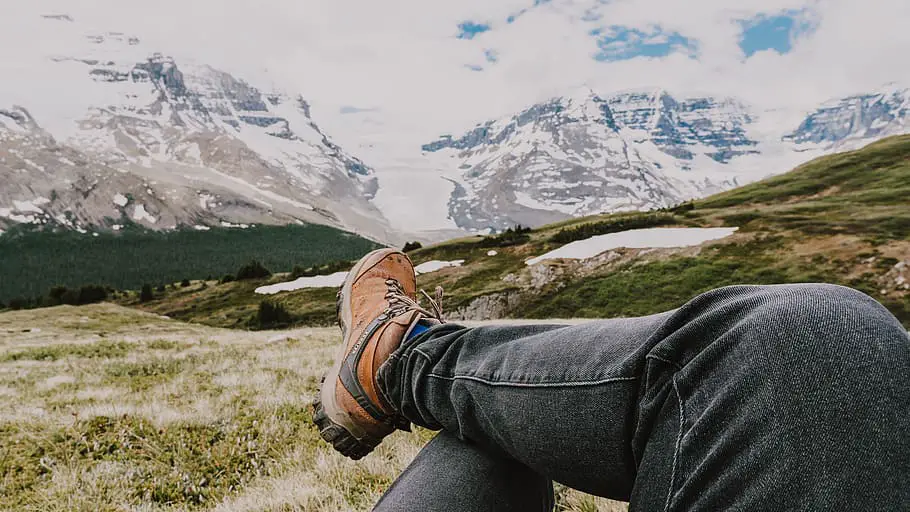
What Are The Best Jeans For Hiking?
If you’re planning on hiking in jeans, look for a pair that aren’t 100% cotton.
The lower the amount of cotton in your jeans, the easier they’ll dry and the less moisture they’ll hold, which is critical.
Most jeans are made with Lycra or Spandex synthetics woven into them these days which will aid in making them faster-drying, moisture-wicking, breathable, and stretchable.
Fit is also important here: skinny jeans are going to stick to your skin and be extremely uncomfortable as you hike, so go with a looser fit if you have the option.
When Are Jeans Good For Hiking?
You can safely bet on wearing jeans for hiking on short day hikes or low-demand nature walks, assuming the weather is mild and there’s no rain in the forecast.
Simple hikes in spring or fall are good times to go hiking in jeans, but the main factor is how long you’ll be hiking.
You don’t want to go on hikes lasting longer than an hour in jeans.
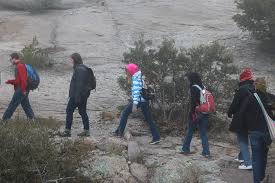
Alternatives To Wearing Jeans For Hiking
When finding something besides jeans to wear for hiking, look for pants or shorts made from quick-drying fabrics like nylon or polyester.
For women, leggings are a better option than jeans to wear hiking.
In colder weather, fleece (made from polyester) is a great choice, as is merino wool, thanks to its breathability, moisture wicking, and quick drying properties.
As range of motion is key on the trail, look for clothing that has some stretch to it if possible.
Check out our guide on what to wear hiking in fall for some great suggestions on appropriate hiking pants.
FAQs About Hiking In Jeans
Jeans are not good for hiking because they restrict your range of motion, can chafe your skin, dry slowly, and hold moisture which can cause overheating or hypothermia depending on the weather.
Wearing jeans while hiking for short day hikes in mild weather is perfectly fine, but for anything longer we don’t suggest it.
The best jeans for hiking are those that have a blend of cotton and synthetics like Spandex or Lycra rather than 100% cotton jeans.
The added synthetic materials will help the jeans to dry faster and hold less moisture than 100% cotton denim.

